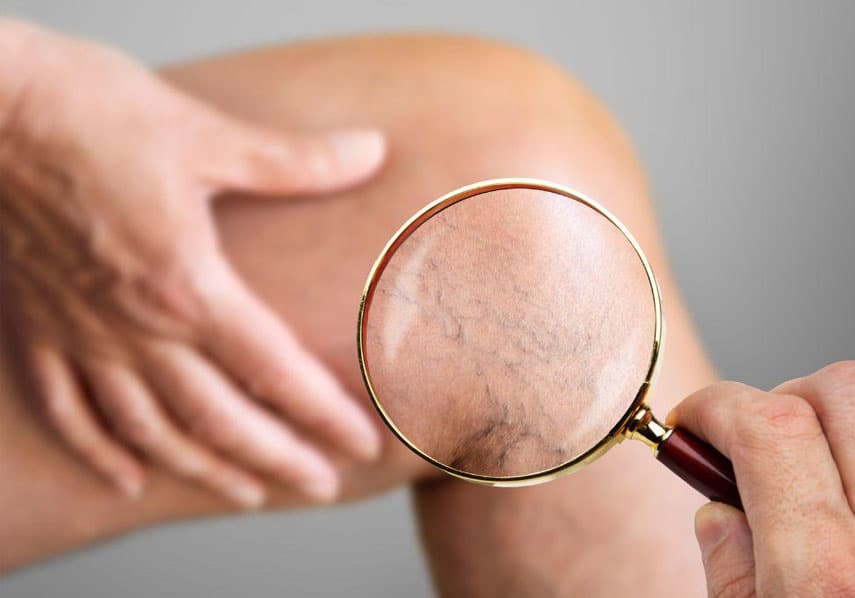Spider veins on the legs, also called telangiectasias, are thin, red, blue, or purple blood vessels that appear close to the skin’s surface.
How to Cure & Prevent Spider Veins on the Legs

What Are Leg Spider Veins?
Are Spider Veins Risky?
Spider veins on the legs are typically not a serious health risk, but they can be a cosmetic concern for some people. In some cases, spider veins may cause mild discomfort or aching, but they are usually not painful.
If you have spider veins and are experiencing any discomfort, it is strongly advised to speak with a vascular specialist. They can help determine the cause of your symptoms and recommend the appropriate treatment.
In rare cases, spider veins may be a sign of a more serious underlying condition, such as venous insufficiency (higher pressure within the main veins in your legs) or deep vein thrombosis. Therefore, if you have spider veins and are experiencing symptoms such as swelling, pain, or redness, it’s important to see a healthcare provider as soon as possible to rule out any underlying conditions.
Are There Ways to Prevent Spider Veins?
- Exercise regularly: Physical activity can improve circulation and may help prevent the development of spider veins.
- Maintain a healthy weight: Being overweight can put extra strain on the veins in your legs, which can increase your risk of developing spider veins.
- Wear supportive hosiery: Wearing compression stockings or tights can help improve circulation and reduce the risk of spider veins.
- Avoid standing or sitting for long periods: Prolonged periods of standing or sitting can decrease blood flow and increase the risk of spider veins. Avoid sitting for long periods of time; instead, move about often. This helps with the circulation of the blood and prevents too much stasis within the legs.
- Elevate your legs: Elevating your legs above your heart while sitting or lying down can help improve circulation and reduce the risk of spider veins.
What Are the Treatments Used for Spider Veins?
Fortunately, spider veins may be treated with a variety of methods, such as:
► Sclerotherapy: Spider veins are often treated in this way. Essentially, a chemical solution is injected into the vein, which causes the vein to collapse and finally dissolve.
► Laser therapy: Laser therapy uses intense bursts of light to destroy the veins and improve the appearance of the skin.
It is important to speak with a healthcare provider to determine your best treatment option. They will take into account your general health, medical history, and the size and location of the veins. You will probably require an ultrasound of the main veins in your leg before any treatment and you will have to avoid sun exposure for about a week after treatment.
Overall, the sight of spider veins on your legs is nothing to be concerned about. However, if their unpleasant appearance affects you, then you can always opt for cosmetic surgery. Find out more about the available treatment options here.
Dr Wong is highly regarded for his specialised clinical interests and skills in a wide range of vascular conditions.








